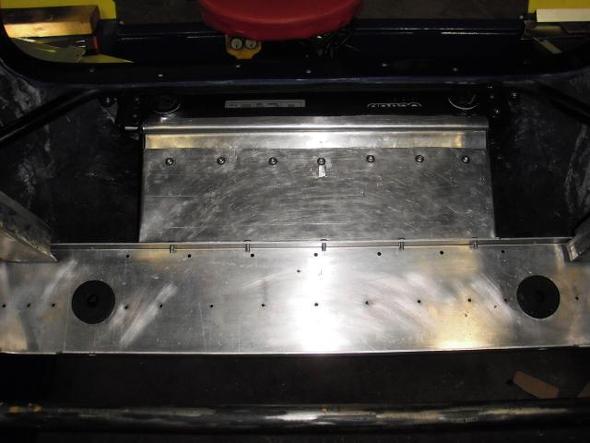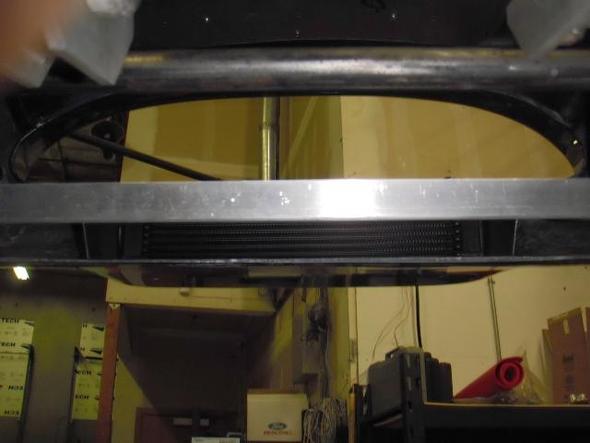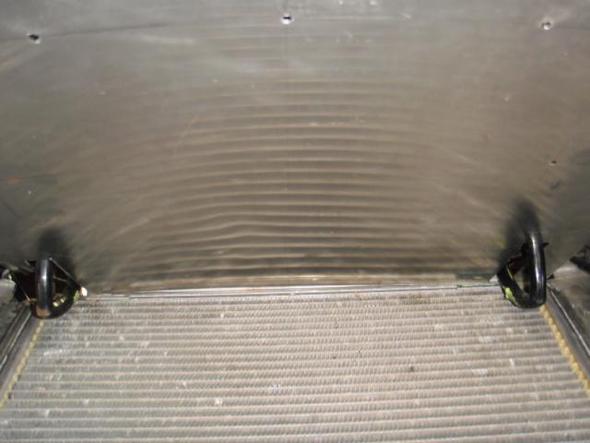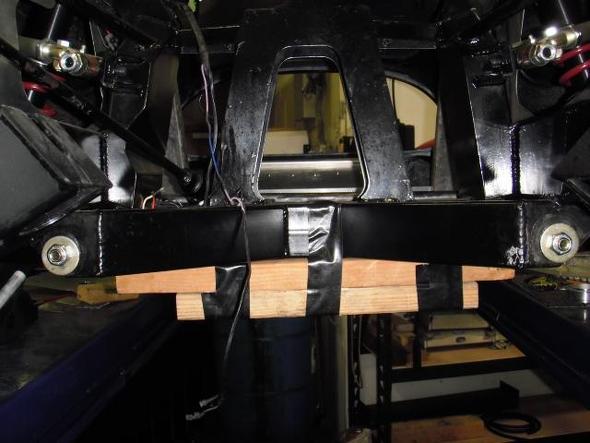I've been wanting to share my aero thoughts for a while, but I got bogged down. My car should be capable of red line in 4th gear and I for some strange reason have the desire to try to get it to do it.
I am a big Carrol Smith fan he would say if it does not work or you cannot make it work, get rid of it. I am also a Richard Hugins fan and have spent considerable time reading his contributions on CC. IMHO - JBL build's a bad ass Cobra, but not my cup of tea.
I can never stop wondering about some ground effects on an ERA because the chassis is so setup for it. I purchased a book by Simon McBeath and as I started to study the problem it became apparent the air must be controlled thru the car as well as around the car so I have been working on ducting the radiator and closing off the front of the car. That sent me back to Mr. Smiths work.
There is a chapter in "Tune to Win" dedicated to internal areo and cooling. One of the physical limitations to air flowing over a surface is that it will detach from the surface and become turbulent if the angle of the surface is falling away to steep to the natural direction of the air flow. Smith quotes 8 to 15 degrees.
Here we see the cooling of a nicely built FIA
Stuff:
1) The air cannot and will not follow the profile of the shroud thus filling that lower area with very turbulent air.
2) The shroud is daming the air on the backside of the cooler and then releasing it into the lower radiator region from the sides which adds to our turbulence in front of the radiator and drag.
3) Also notice the dams on either side of the radiator that are for all practical purposes perpendicular to the air flow. Smith states that a surface normal to flow represents a drag coefficient of 1.5 (the highest). There are around 346 in^2 of radiator area. There are an additional 90 in^2 of side panels which do nothing and the domed roof only adds to the problem.
5) There are a lot of threads on "How do I get cold air in the foot boxes?"
Notice the fresh air inlets and consider - is it is possible that the air filling below the radiator shroud is causing a mess with the whole thing since what we want is smooth laminar flow. One would assume the air would be laminar feeding the fresh air, but that is all it would be. That mess could well interfere with feeding the fresh air ducts, I only throw that out as a point of interest as the fix I would use for that I am instead going to use to feed the brake ducts.

So now I want you to look at my direction.
The stock
oil cooler that came in my car is taller than the opening in the body. I went with a 3." Setrab and moved the mounting outboard. We want clean straight air going thru the cooler. By moving the cooler outboard I hope to use the cooler to help move excess air away and around the front of the car. I will add side dams to stop air bypassing the cooler. Notice the cooler is below the top of the glass.

We are looking from the top down at the lower radiator support. The foriegn sheet metal is the top of my
oil cooler shroud. It goes from the top of the cooler to the bottom of the radiator shroud and exits between the bottom of the shroud and the fiberglass

Here is the exit of the
oil cooler duct. The walls just need a small extension to fully box it to the exit.

I have prototype walls built to box the radiator and I have added a false roof to the dome to decrease that volume in that region. We will box the hinges so air does not leak thru there.

I am going to fill the the ellipses in the nose with aluminum panels that intersect the oil cooler opening in the fiberglass and mount the brakes ducts in those panels.
We still have the problem of the intake opening not aligning with the bottom of the radiator. My plan is to add a floor from the fiberglass intake shelf to the bottom of the radiator. Add some kind of small riser and then add a roof on top of the riser that slopes back to the radiator at 8 degrees.
This will split the radiator cooling into 2 intake tracts. A large one which gets straight flow and a lower, much smaller (7 rows) that gets air, perhaps not so clean, but it will not mess with the air in the larger tract.
I plan to fill the center section with 44% area reduced screen (Pegasus #10 screen). If it won't stay cool (it will) I will keep using bigger screen until it does or I will not run with any screen. It may be we have to run different screen depending on variables.
I want to use the screen to help move air around the car. I can't even mess with external aero until I get this as they both go together.
I plan to sheet the bottom - the wood is in the same plane as the frame. The front attachment is above the oil cooler exit (same plane as lower radiator shroud) and then slopes towards the wood. We will bend it at the bottom of the wood and attach to the cross member. I hope to use this to help with down force and also pull exit air from exchangers.

In "Tune to Win" Smith talks about the ducts acting as diffusers. By reducing the frontal intake tract we can build a good diffuser to feed the radiator and not pack the nose with air. I have plans to duct the exit of the radiator also but that is for another time.
If you have thoughts or experience please share.
x-chr